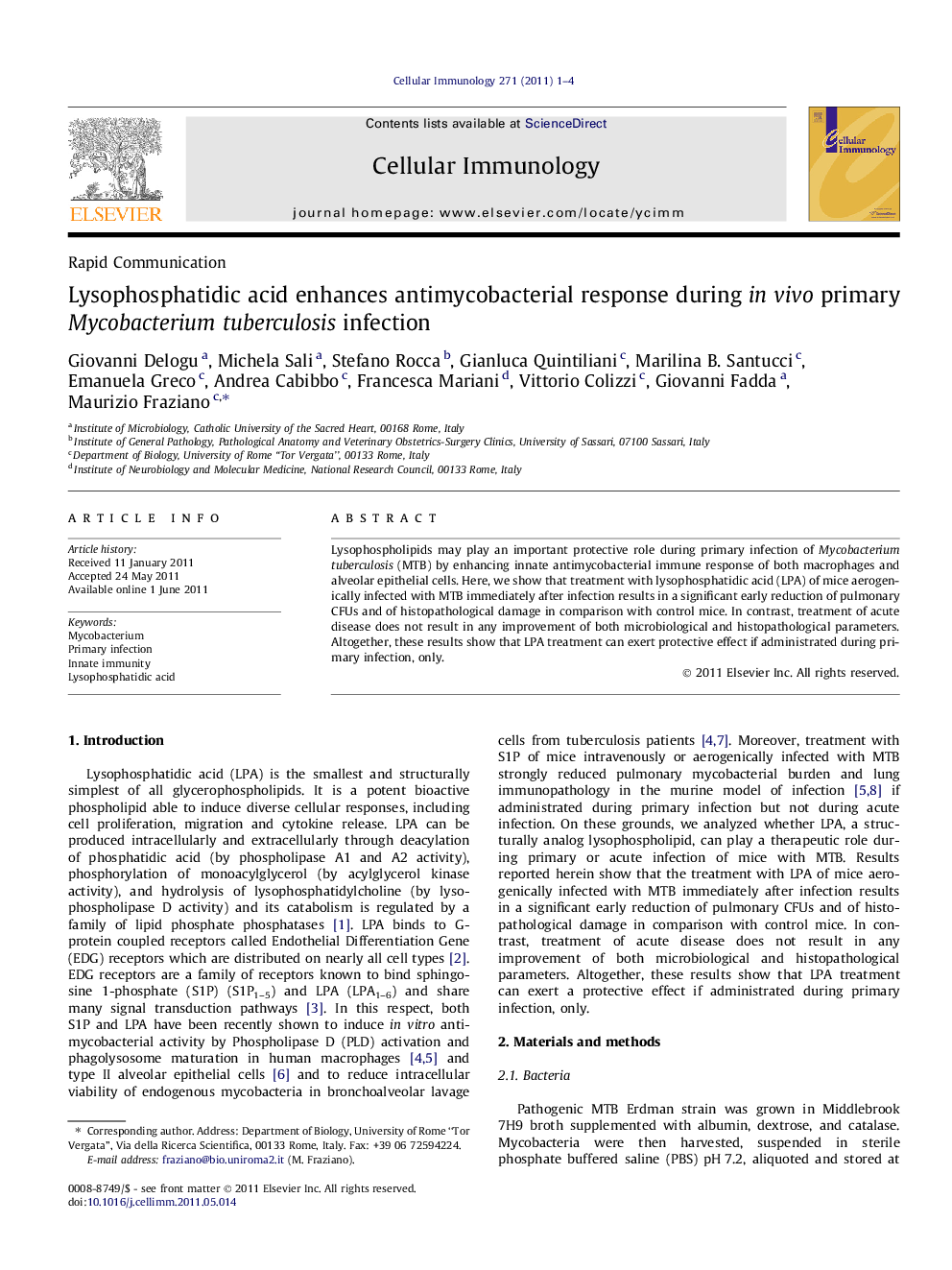| Article ID | Journal | Published Year | Pages | File Type |
|---|---|---|---|---|
| 2167314 | Cellular Immunology | 2011 | 4 Pages |
Lysophospholipids may play an important protective role during primary infection of Mycobacterium tuberculosis (MTB) by enhancing innate antimycobacterial immune response of both macrophages and alveolar epithelial cells. Here, we show that treatment with lysophosphatidic acid (LPA) of mice aerogenically infected with MTB immediately after infection results in a significant early reduction of pulmonary CFUs and of histopathological damage in comparison with control mice. In contrast, treatment of acute disease does not result in any improvement of both microbiological and histopathological parameters. Altogether, these results show that LPA treatment can exert protective effect if administrated during primary infection, only.
Graphical abstractLysophosphatidic acid enhances antimycobacterial response during in vivo primary Mycobacterium tuberculosis infection and comparative analysis with S1P administration.Figure optionsDownload full-size imageDownload as PowerPoint slideHighlights► LPA as possible therapeutic molecule in MTB infection. ► LPA reduces pulmonary CFUs and histopathology in MTB infected mice during primary infection but not during acute disease. ► LPA as a molecule enhancing antimycobacterial innate immunity.
